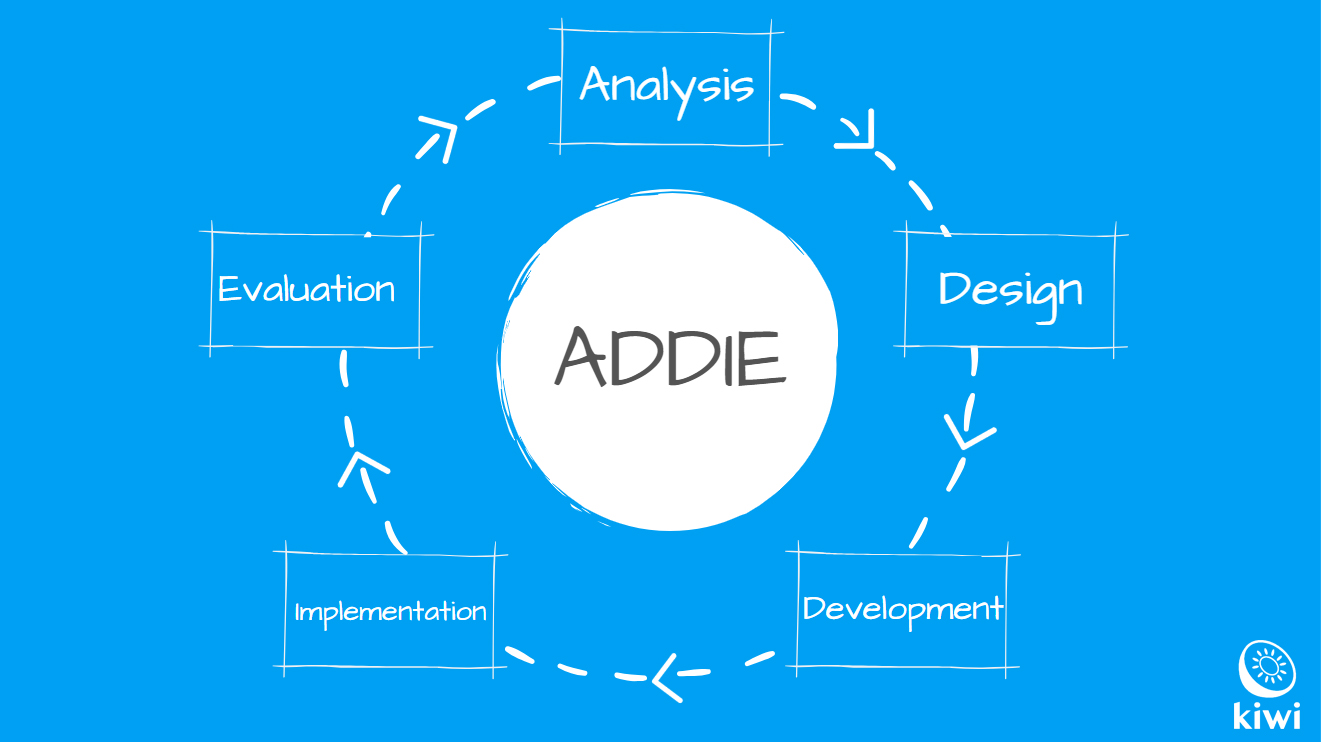25 Jan

Addie Explained
Addie is a framework used to develop courses. The framework consists of five steps and is designed to organize the course design process. Addie is an acronym for the five stages of the course design process analysis, design, development, implementation, and evaluation. The stages are done in order with constant revision and assessment.
The Addie Process steps
Analysis
The analysis is the critical stage in most processes, not only in training course development. Essentially it is the evaluation of the need for training, the reason why we need to develop it, and the goal behind it. To create effective training, you have to know and understand the knowledge gaps you want to fill and the overall goal you want to achieve.
At this step, you’re doing a full evaluation and audit of the current situation. You analyze by asking all sorts of questions. Start by asking who you’re creating the training for and why it’s essential that it exists. Continue by understanding what you want to achieve exactly with this training, where and when will it take place and how it will be done.
Design
The design stage is when it all starts to come to life. By relying on the information we have discovered in the first stage, the analysis, we take the first steps towards creating our training program. This includes training methods, duration, and structure, so all of the assessments done previously.
The design stage is also when you create the prototype of your courses and create a general scheme for the training. In this step, you will have to set the learning objectives, exercises, content, subject matter analysis, lesson planning, instruments, and media selection.
Development
The development stage is the stage when you start creating everything. By relying on the prototype you have previously designed, you begin to develop the course content. Programmers develop the technologies, content creators do the content, etc. This is the most important phase of training development, so this is where most of the work is done.
The training has to be best suited for the people it is created for. This is why in this phase we add graphics, choose colors and decide fonts. Some people might find it To some, this may seem minor, but this determines how engaging the course content is.
After you create the course, you should adapt it to be as user-friendly as possible. You should also check for basic errors – grammar, spelling, and syntax. Testing should also look at the mechanics of the course. A key consideration at this stage is navigation. The vast majority of problems that learners encounter are related to how the course was built in the authoring tool. The frustrating thing is that it can often be something very simple that the instructional designer misses because they did not test the course.
Testing the course is not flicking through it – it is a systematic check on the accuracy of the content and the utility of the navigation. Can learner progress in the way I designed? – even if they make unexpected decisions.
Implementation
The implementation phase develops procedures for training facilitators and learners. Training facilitators cover the course curriculum, learning outcomes, a method of delivery, and testing procedures. Preparation for learners includes training them on new tools (software or hardware) and student registration. Implementation includes the evaluation of the design.
Evaluation
Since Addie is all about step by step training development, it really puts an emphasis on quality. This makes evaluating the process an important stage of it. The evaluation phase consists of two aspects: formative and summative. Formative evaluation is present in each stage of the ADDIE process, while summative evaluation is conducted on finished instructional programs or products. Donald Kirkpatrick’s Four Levels of Learning Evaluation are often utilized during this phase of the ADDIE process.
LMS
The five Addie steps are applicable in many different platforms. An LMS is no different. What makes it so convenient is the easy access from learners and easy communication. LMS also makes the evaluation process quite easy due to the reporting features of completion, uptake, and performance. This employee training program suits ADDIE perfectly.
This new and improved way of sharing knowledge makes it super easy to allow you to manage not only the content you put in but also your learners. Here you can manage your employee’s enrollment, fix their schedule, and manage their training steps. Kiwi LMS makes it easier than ever to train your employees. With the drag and drop feature, you can easily manage the courses and trainees.





Follow us